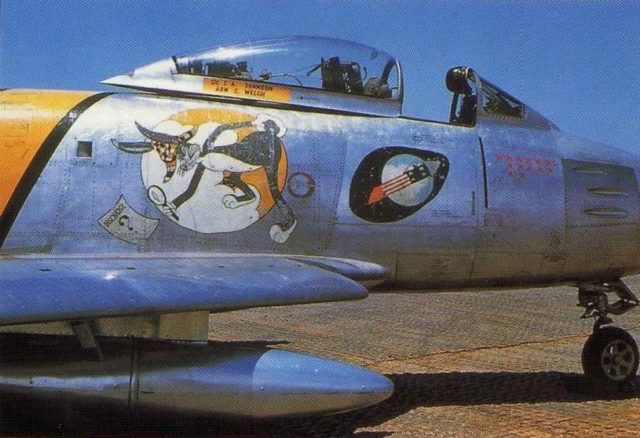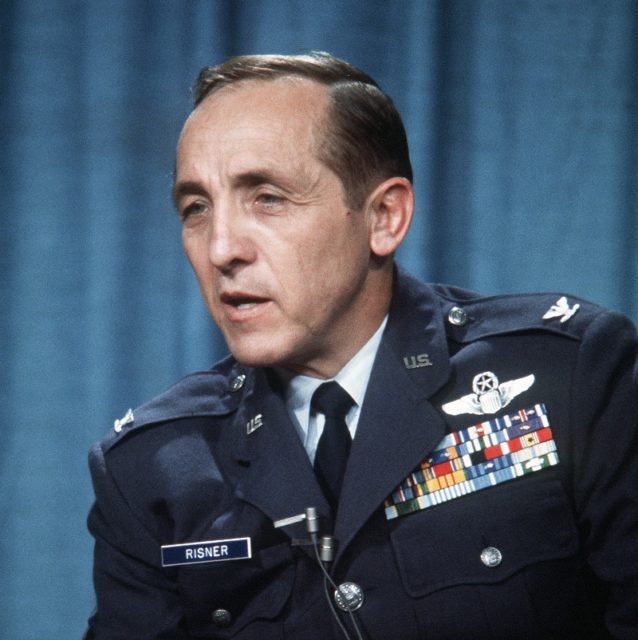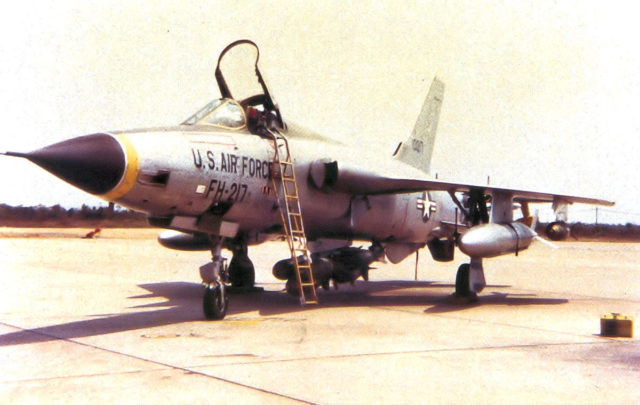James Robinson Risner was a remarkable pilot and a man whose tenacity of spirit was only matched by his bravery.
Risner ended his career in the United States Air Force as a Brigadier General and was one of the most decorated pilots in the Korean and Vietnam Wars. He spent almost eight years as a prisoner of war at Hoa Lo Prison, nicknamed the Hanoi Hilton by those incarcerated there.
Before his capture, he had gained a reputation as one of the best pilots in the US Air Force. While the Korean War raged, Risner shot down eight MIG-15 planes. He was chosen to fly an F-100F Super Sabre to commemorate Charles Lindbergh’s transatlantic flight along the same route; he completed the trip in a mere six and a half hours.
Despite his skill in the cockpit, Risner was hit by fire on four out of five missions in a row. His luck ran out after he was the subject of Time magazine’s cover as he was shot down and captured.
When the North Vietnamese forces realized who they had captured, they waved the Time article under Risner’s nose and claimed he was the fourth most valuable target they could have caught. According to the New York Times, the three ahead of him in the queue were President Lyndon B. Johnson; Defense Secretary Robert S. McNamara and Secretary of State Dean Rusk.

While a guest of the communists, he suffered. Risner was severely tortured for 32 days, resulting in him being coerced into confessing war crimes. The LA Times reported he was beaten, starved, and held down by ropes. He also had his right arm ripped from its socket.
His biography reads as though torn straight from the pages of an action novel. He was a real life hero who pushed his body to extremes to protect the country he loved.

When the North Vietnamese forces ordered him to do a propaganda broadcast, Risner attempted to destroy his voice by injuring his own throat. When that failed, he drank a paste made from soap.
According to the newspapers, he then tried to stay awake as long as possible and managed three days and nights. In the end, it failed to have the desired effect, and Risner had to give the broadcast. He performed it in a fake German accent which further enraged his captives but caused his fellow prisoners to admire him even more.
One of the more incredible stories about Risner’s time in active service is how he attempted to push his damaged wingman’s aircraft out of enemy skies and towards friendly forces.
Risner and 1st Lt. Joseph Logan were on a mission escorting F-84 Thunderjet fighter-bombers in an attack on a chemical plant during the Korean War. Not only did Risner chase an enemy MIG at supersonic speeds along a dry riverbed, across low hills and into a Chinese airbase where he shot it down, but he then proceeded to push Logan’s plane back towards the island of Cho Do off the North Korean coast.

To pull it off, Risner ordered Logan to shut off his engine. Then he inserted the nose of his jet into the tailpipe of his wingman’s plane and tried to push him towards friendly territory. As hydraulic fluid and fuel splashed over Risner’s canopy, turbulence played havoc with the plan. Logan’s plane was guided down towards Cho Do – where the stricken pilot bailed out.
Despite being a strong swimmer and hitting the water close to land, Logan got tangled up in his parachute and eventually drowned. Risner managed to guide his plane down safely despite his engine cutting out on the way back to base.
In jail, Risner was the top-ranking officer – which meant he received more abuse from his jailers. Instead of breaking his spirit, the treatment reinforced and enhanced it, and Risner ensured his fellow prisoners morale was kept high.
When he and other prisoners were discovered holding forbidden religious services in their workshop, they were hauled off to the torture chamber. As he was led away, the men in the cellblock burst out with a rendition of The Star-Spangled Banner. He described how it made him feel ‘nine foot tall.’ In 2001 a nine-foot tall statue honoring Risner was unveiled at the US Air Force Academy.
According to an anecdote in the New York Times, Risner met a Russian airman who had been an MIG-15 ace. His former enemy wondered aloud if they had ever faced each other across the skies. Risner was emphatic; they had not. If they had, he said, the Russian would not be standing, living or breathing. He was probably right.
Risner died in 2013 aged 88.
